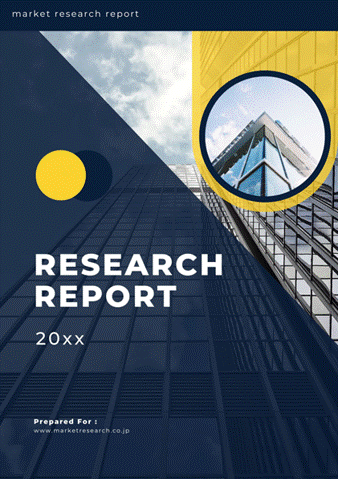 | • レポートコード:B-MOR-041058 • 出版社/出版日:Mordor Intelligence / 2018年2月 • レポート形態:英文、PDF、150ページ • 納品方法:Eメール(受注後2営業日) • 産業分類:農業 |
| Single User(1名様用) | ¥629,000 (USD4,250) | ▷ お問い合わせ |
| Team User(7名様用) | ¥666,000 (USD4,500) | ▷ お問い合わせ |
| Corporate User | ¥1,295,000 (USD8,750) | ▷ お問い合わせ |
• お支払方法:銀行振込(納品後、ご請求書送付)
レポート概要
| 本資料は、種子の世界市場について調べ、種子の世界規模、市場動向、市場環境、製品別(非遺伝子組み換え・ハイブリッド、遺伝子組み換え)分析、作物別(穀類・シリアル、油糧種子、野菜の種子、その他)分析、アメリカ市場規模、ヨーロッパ市場規模、アジア市場規模、日本市場規模、中国市場規模、企業の競争環境、関連企業情報などをまとめた調査レポートです。 ・イントロダクション ・エグゼクティブサマリー ・種子の世界市場インサイト ・種子の世界市場環境 ・種子の世界市場動向 ・種子の世界市場規模 ・種子の世界市場規模:製品別(非遺伝子組み換え・ハイブリッド、遺伝子組み換え) ・種子の世界市場規模:作物別(穀類・シリアル、油糧種子、野菜の種子、その他) ・種子の世界市場:地域別市場規模・分析 ・種子の北米市場規模・予測 ・種子のアメリカ市場規模・予測 ・種子のヨーロッパ市場規模・予測 ・種子のアジア市場規模・予測 ・種子の日本市場規模・予測 ・種子の中国市場規模・予測 ・種子のインド市場規模・予測 ・関連企業情報・競争状況 |
The expanding world population, rising adoption of biotech crops across the world, an increase in the usage of biofuels and animal feed, and growing land reclamation for agricultural purposes are the major growth factors driving the seed market. On the other hand, the lower adoption rate of GM crops in various countries, coupled with their lengthy approval time, extensive research and time involved in stabilizing and introducing new seed varieties with novel traits, and consolidating the seed market are the major constraints for the industry.
Growing Demand for Grains, Oil, and Vegetables
Grains represent the biggest portion of daily calorie intake in developing countries of the Middle East & Africa, Asia/Oceania, and CIS, and therefore, the demand for grains is going to be one of the most important drivers of the market studied. According to the USDA’s baseline projections, the developing countries’ share of the projected growth includes 83% for grains and oilseeds. Furthermore, the developing countries’ demand for agricultural products is expected to increase faster than their production. As a result, these countries may account for 92% of the increase in total grains and oilseeds import.
Rapid Adoption of Biotech Crops
Biotech crops are considered to be the fastest adopted crop technology in the history of modern agriculture. Thus, GM seeds have a high potential for growth during the forecast period. In 2016, around 26 countries grew 185.1 million hectare of biotech crops, registering an increase of 3% (5.4 million hectare), from 179.7 million hectare in 2015. GM seeds with stacked traits have gained prominence over the recent years, and have increased from 58.5 million hectare in 2015 to 75.4 million hectare in 2016, a 29% increase, equivalent to 16.9 million hectare.
North America to Dominate the Market Growth
North America seed industry dominated the global seeds market, with a share of around 35%. The United States and Canada dominate the market share for the seed market in the region. Asia-Pacific has been identified as a region, which is yet to reach its maximum potential in the global seed domain. The Asia-Pacific is expected to be the fastest-growing market, recording a CAGR of around 8.2% during 2018 – 2023.
Key Developments in the Market
• Dow Chemical and DuPont entered into a merger transaction at the end of 2016.
• September 2017: China National Chemical Corp. purchased Swiss chemical and seeds company, Syngenta, for USD 43 billion.
• September 2016: Bayer has recently purchased Monsanto for USD 66 billion. If the deal is successfully closed, the merger will result in world’s largest seed and Agriculture Company.
Major Key Players: MONSANTO, GROUPE LIMAGRAIN, SYNGENTA, BAYER CROP SCIENCE, DuPont (PIONEER)
Reasons to Purchase this Report
• To understand the growth trends and forecast for 2018 – 2023 in the global seed market. The information is crucial to understand the market’s functionalities and the changes which are possible to follow.
• Analyzing various perspectives of the market with the help of Porter’s five forces analysis
• Major developments in the market are identified in the study, which helps the clients to understand the nature and scope of this market from a macro perspective.
• The information regarding market overview, especially in terms of maturity provided in the study, is essential toward developing apt growth strategies suitable for the region considered in the study.
• Identify the latest developments, market shares and strategies employed by the major market players.
• 3 months analyst support along with the Market Estimate sheet in excel.
Customization of the Report
• Countries of client’s interest can be included in report based on feasibility of report.
• Companies of client’s interest can be included in report based on feasibility of report.
1. Introduction
1.1 Market Definition
1.2 Key Findings of the Study
2. Research Scope and Methodology
2.1 Study Deliverables
2.2 Study Assumptions
2.3 Research Methodology
2.4 Research Phases
3. Market Dynamics
3.1 Drivers & Restraints
3.1.1 Drivers
3.1.1.1 Growing demand for Grains, Oils & Vegetables
3.1.1.2 Increasing Usage of Biofuels
3.1.1.3 Increasing Demand for Animal Feed
3.1.1.4 Rapid Adoption of Biotech Crops
3.1.1.5 Decreasing Per Capita Farmland
3.1.2 Restraints
3.1.2.1 Long GM Approval Timelines and Government Regulations
3.1.2.2 Rising Concerns over GM Seeds
3.1.2.3 Years Involved in Development of New Traits
4. Porter's Five Forces Analysis
4.1 Bargaining Power of Supplier
4.2 Bargaining Power of Buyers
4.3 Threat of New Entrants
4.4 Threat of Substitute Products and Services
4.5 Degree of Competition
5. Market Segmentation
5.1 By Product
5.1.1 Non-GM/Hybrid Seeds
5.1.2 GM Seeds
5.1.2.1 Herbicide Tolerant
5.1.2.2 Insect Resistant
5.1.2.3 Abiotic Stress Resistant
5.1.2.4 Other Stacked Traits
5.1.2.5 Varietal Seeds
5.2 By Crop
5.2.1 Grains & Cereals
5.2.1.1 Maize (Corn)
5.2.1.2 Rice
5.2.1.3 Wheat
5.2.1.4 Sorghum
5.2.2 Oilseeds
5.2.2.1 Soybean
5.2.2.2 Sunflower
5.2.2.3 Cotton
5.2.2.4 Canola
5.2.3 Vegetables Seeds
5.2.3.1 Solanaceae
5.2.3.2 Cucurbit
5.2.3.3 Roots & Bulbs
5.2.3.4 Brassica
5.2.3.5 Others
5.2.4 Other Seeds
5.3 By Geography
5.3.1 North America
5.3.1.1 The United States
5.3.1.2 Canada
5.3.1.3 Mexico
5.3.1.4 Others
5.3.2 Europe
5.3.2.1 Spain
5.3.2.2 The United Kingdom
5.3.2.3 France
5.3.2.4 Germany
5.3.2.5 Russia
5.3.2.6 Italy
5.3.2.7 Others
5.3.3 Asia-Pacific
5.3.3.1 China
5.3.3.2 India
5.3.3.3 Japan
5.3.3.4 Australia
5.3.3.5 Others
5.3.4 South America
5.3.4.1 Brazil
5.3.4.2 Argentina
5.3.4.3 Others
5.3.5 Africa
5.3.5.1 South Africa
5.3.5.2 Others
6. Competitive Landscape
6.1 Most Adopted Strategies
6.2 Most Active Companies
6.3 Market Share Analysis
7. Company Profiles
7.1 Monsanto
7.2 Groupe Limagrain
7.3 Syngenta
7.4 Dupont (Pioneer)
7.5 Land O'Lakes
7.6 KWS AG
7.7 Bayer CropScience
7.8 Sakata Seed
7.9 Takii Seed
7.10 DLF-Trifolium
8. Market Outlook
9. Appendix